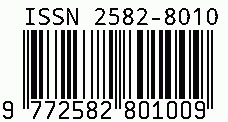
International Journal of Leading Research Publication
E-ISSN: 2582-8010
•
Impact Factor: 9.56
A Widely Indexed Open Access Peer Reviewed Multidisciplinary Bi-monthly Scholarly International Journal
Plagiarism is checked by the leading plagiarism checker
Call for Paper
Volume 6 Issue 4
April 2025
Indexing Partners



















Converging On Corporate Crimes And Human Rights Through Law
| Author(s) | Ashish Verma |
|---|---|
| Country | India |
| Abstract | Although companies have been chastised for being the primary perpetrators of actions that add up to net human rights violations, the vast majority of case laws that have been discussed or contested to date concern allegations of "corporate involvement" in net human rights violations committed by others (generally governments or State specialists). The idea is that, even if companies are not the major (or "front") perpetrators of abuse, they should be held legally liable if they assist or enable the abuse in any manner. Speculations of business collusion have been used to justify holding private performers accountable for crimes that necessitate State action. According to Judge Katzmann, the case Khulumani v Barclays Bank was brought before the US courts under the ATS because "recognising private aiders and abettors' liability merely allows private actors who significantly assist State actors in violating international law for the purpose of encouraging illegal conduct to be held accountable for their acts." Under US law, it makes no difference whether a private actor is held accountable as an aider and abettor of a rule violation that necessitates legal action by the State if the person in issue is not the primary perpetrator..." As a result, suspicions regarding business participation in other people's wrongdoings are anticipated to take centre stage in local government action in instances involving grave human rights violations. These are linked to ideas of "judicial connivance" and conceptions of voluntary obligation in criminal law, such as "helping and abetting," "accessory and responsibility," and "induction." In the realm of private law cures, hypotheses of auxiliary responsibility have also been created to assist define the conditions in which individuals and companies may be held legally responsible for the illegal protests of strangers. Homegrown healing structures rely on basic accountability criteria such as knowledge (for example, what the company "knew" at the critical time), intent (for example, what the alliance was meant to construct), and causation (regardless of whether the activities of the organisation caused the abuses that at that point occurred). In any case, there are variances between locations in terms of the assessment components to be used, as well as the manner and extent to which people's knowledge and goals (such as officials, managers, and other representatives) can be ascribed to business organisations. |
| Keywords | human, rights, violations, organisation, accessory, responsibility, induction |
| Published In | Volume 5, Issue 5, May 2024 |
| Published On | 2024-05-11 |
| Cite This | Converging On Corporate Crimes And Human Rights Through Law - Ashish Verma - IJLRP Volume 5, Issue 5, May 2024. |
Share this


CrossRef DOI is assigned to each research paper published in our journal.
IJLRP DOI prefix is
10.70528/IJLRP
Downloads
All research papers published on this website are licensed under Creative Commons Attribution-ShareAlike 4.0 International License, and all rights belong to their respective authors/researchers.

